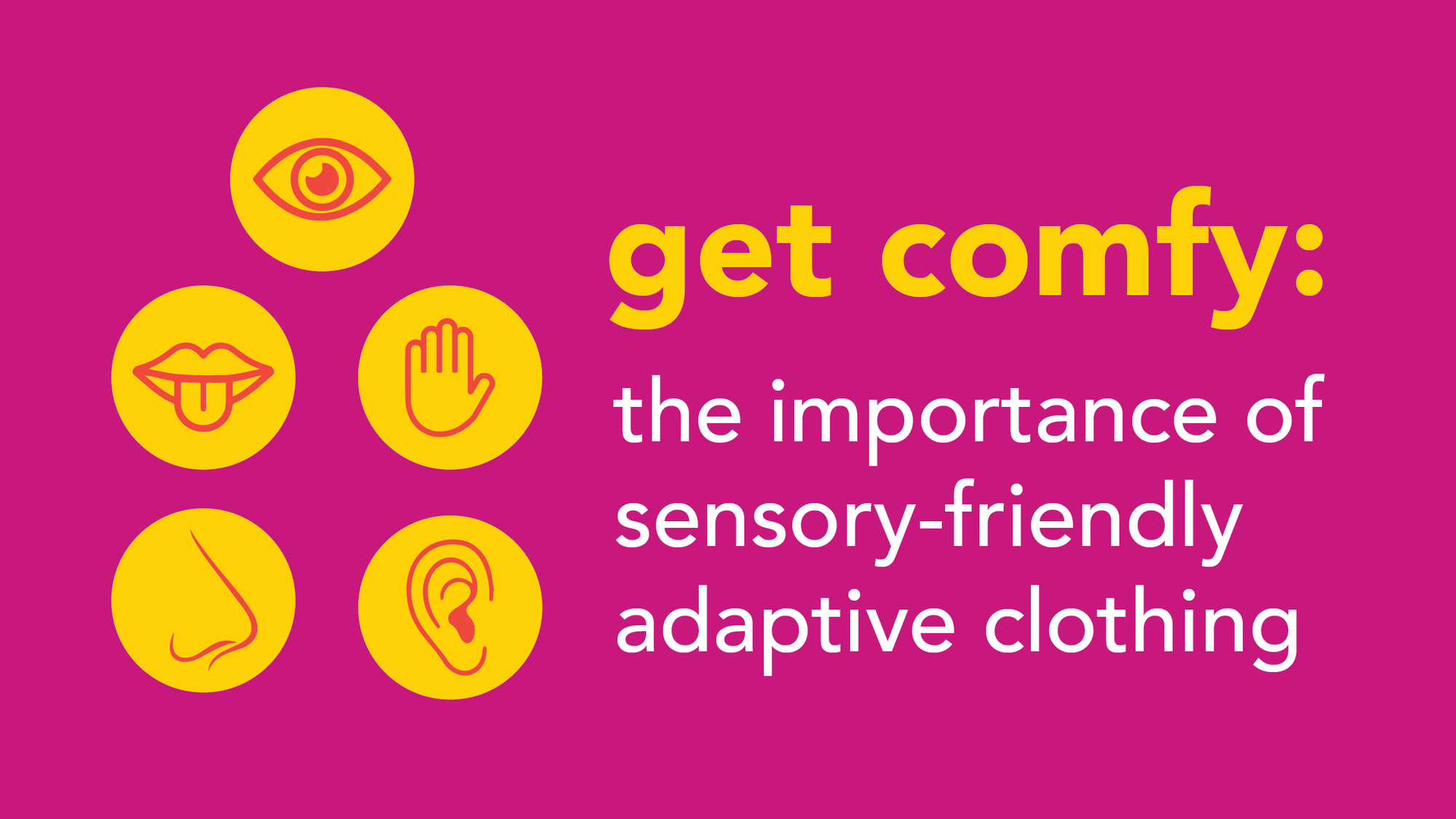When it comes to clothing, comfort is essential for everyone. However, individuals with sensory sensitivities face unique challenges in finding garments that meet their needs. That's where sensory-friendly adaptive clothing comes in. In this blog post, we will explore the importance of sensory-friendly adaptive clothing and how it can make a significant difference in the lives of individuals with sensory sensitivities.
From Saba Kamaras, co-founder Spoonie Threads :
"Many of our customers find traditional clothing notions like tags and seams to be uncomfortable. Certain fabrics can also be very irritating to people with sensory sensitivity. When we design our products, we try to keep the interior of the garment as comfortable as possible. We use heat press labels (which are completely flat) or tear away tags that can easily be removed. We use flat seams wherever possible, and select fabrics with a very soft handfeel."

Understanding Sensory Sensitivities: Sensory sensitivities are common among individuals with conditions such as autism spectrum disorder, sensory processing disorder, ADHD, and various other neurodivergent conditions. These individuals can have heightened sensitivity or aversion to certain textures, seams, tags, or tight-fitting clothing. The sensory experience of wearing clothing can be overwhelming, leading to discomfort, anxiety, and meltdowns.
The Role of Sensory-Friendly Adaptive Clothing: Sensory-friendly adaptive clothing is specifically designed to address the unique sensory needs of individuals with sensitivities. It takes into account factors such as fabric type, seam placement, tagless designs, and adjustable features. Here's why sensory-friendly adaptive clothing is so important:
-
Enhanced Comfort: Sensory-friendly adaptive clothing uses soft, breathable fabrics that minimize irritation and discomfort. These garments have flat seams or seamless designs, eliminating potential sources of irritation that can trigger sensory sensitivities. By prioritizing comfort, individuals can feel more at ease in their clothing, allowing them to focus on other aspects of their day.
-
Reduced Sensory Overload: Sensory-friendly adaptive clothing minimizes the potential for sensory overload. The removal of tags and scratchy materials reduces unnecessary sensory input that can overwhelm the wearer. By creating a more soothing and predictable sensory experience, individuals can better regulate their sensory responses and maintain a state of calm.
-
Improved Independence and Confidence: By wearing sensory-friendly adaptive clothing, individuals gain a sense of independence and empowerment. Adaptive features such as easy closures (such as Velcro or magnetic fastenings), elastic waistbands, and adjustable components enable individuals to dress and undress more easily, fostering self-reliance. This improved independence can boost their confidence and self-esteem.
-
Inclusive Fashion Choices: Sensory-friendly adaptive clothing doesn't mean compromising on style. Many brands now offer a wide range of fashionable options that cater to sensory needs. From trendy designs to vibrant colors, individuals can express their personal style while feeling comfortable and supported. This shift towards inclusive fashion choices promotes acceptance, celebrates diversity, and breaks down societal barriers.
Sensory-friendly adaptive clothing plays a vital role in meeting the unique needs of individuals with sensory sensitivities. By prioritizing comfort, reducing sensory overload, promoting independence, and offering inclusive fashion choices, these garments enhance the overall well-being, confidence, and quality of life for individuals who rely on them. As more awareness is raised and innovative designs are introduced, sensory-friendly adaptive clothing continues to contribute to a more inclusive and understanding society, ensuring that everyone can experience the joy of dressing comfortably and confidently.
Here are additional resources and information about sensory-friendly adaptive clothing:



